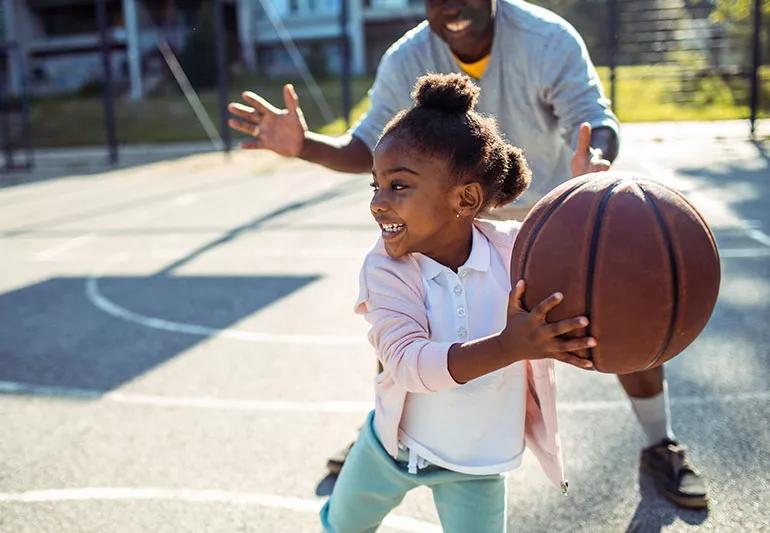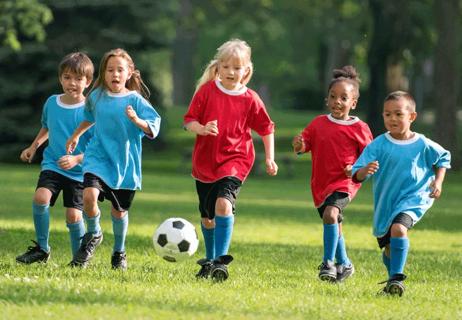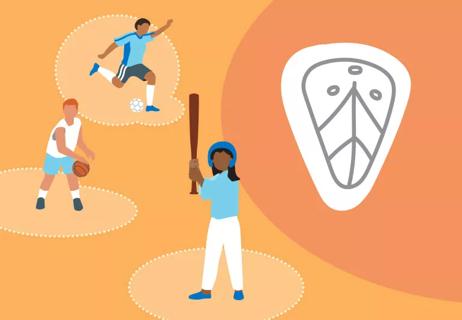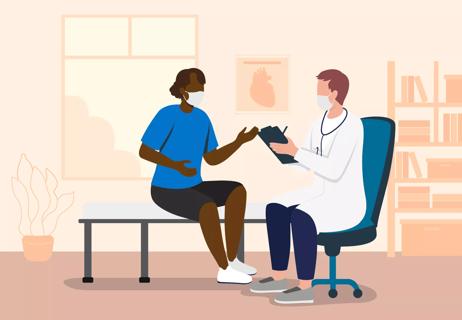Each child and condition is unique, but most kids can play with proper precautions

For many kids, sports are an integral part of their childhood and adolescence. However, when kids live with or develop a heart condition, parents are understandably concerned about how safe it might be for them to play sports.
Advertisement
Cleveland Clinic is a non-profit academic medical center. Advertising on our site helps support our mission. We do not endorse non-Cleveland Clinic products or services. Policy
Pediatric cardiologist/electrophysiologist Akash Patel, MD, says many factors go into determining if a kid can (or can’t) play a specific sport.
“We’ve learned that creating a proper safety net for kids can often allow us to be more liberal in allowing sports participation,” he says. “Of course, there are unique circumstances where we would like kids to avoid playing certain types of sports, or may tailor the sporting environment to be as safe as possible. But the goal is that most kids can play sports safely.”
Dr. Patel says sports participation generally depends on the specific heart condition a kid lives with. Every child is different — and even kids with the same diagnosis can have different symptoms or a more serious form of the condition.
Take cardiomyopathy, or conditions that affect the heart muscle. With these, your heart can be stiff, have scar tissue or become enlarged or thicker.
“We know that when people living with this diagnosis play sports, they’re at increased risk of having a sudden cardiac arrest during activity,” says Dr. Patel, noting that hypertrophic cardiomyopathy, which is when the heart muscle becomes thicker, is the “most concerning” type where sports is concerned.
Advertisement
“But not all kids with a cardiomyopathy diagnosis may be the same. So, there are circumstances where they may be able to play certain types of sports or do certain levels of activity.”
Generally, kids who have had cardiac conditions, and maybe even had cardiac surgery, don’t need any additional protective gear for whatever sport they’re playing. They typically also aren’t prevented from playing certain positions — for example, allowed to be a catcher, but not a first baseman in baseball.
But Dr. Patel says certain kids might not be given the green light for every sport. “We generally tell kids who have pacemakers or defibrillators to avoid contact sports,” says Dr. Patel. “Those are sports in which there can be a direct blow to the equipment that’s implanted underneath their skin, in the abdomen or chest. You want to minimize any risk of damage to these devices. That does change the sports that they can play.”
Guidance over who can’t play sports might also change over time. For example, historically, kids with inherited arrhythmias, or an irregular heartbeat, were restricted from playing sports. Today, however, that’s not always the case.
With all that being said, Dr. Patel says there are precautions that parents, kids, schools and doctors can discuss before beginning to play sports. “We want to identify kids who may be at risk for having a concerning cardiac event on the sporting field,” he states. “And we want to identify them before that event happens.”
One of the most important steps kids can take is having a pre-participation cardiac screening in addition to a physical. For athletes with a diagnosed heart condition, this screening generally is done in tandem with a cardiologist and primary care provider.
“That’s where we will often prescribe specific things in terms of what sports they can play, how they should play, when and how they should limit themselves, and any sort of safety net that they need around playing sports,” explains Dr. Patel. “A cardiologist would work with the primary care provider because we’re focused on the heart. We can say, ‘From the heart standpoint, these are the things that would allow a kid to go back into sports.’”
This screening is important because there are times when athletes die after experiencing sudden cardiac arrest. These tragic events are rare, happening anywhere from between 1 in 50,000 to 1 in 300,000 people, but do occur.
“Unfortunately, there are situations where, despite the best screening, these events can still happen,” says Dr. Patel. “One of the important things that families should always be mindful of is, ‘How do we create the safest environment if a kid were to have an event?’”
Advertisement
Another layer of protection for kids with heart conditions is being around people who know CPR. “Knowing CPR is a good life skill that any person should have,” advises Dr. Patel. “But I tell families who have children living with cardiac conditions that all people providing care to a kid — for example, parents, babysitters and nannies — should learn CPR.”
For athletes with heart conditions, families can take an extra step and make sure that athletic coaches and trainers are also trained in CPR. “If a cardiac event happens, they can provide CPR until emergency services arrive and, hopefully, resuscitate that child,” says Dr. Patel.
In some cases, kids might have a cardiac event where their heart rhythm becomes abnormal and dangerous. Using an AED, or automated external defibrillator, can help shock the heart back into its usual rhythm.
“You should always do CPR,” says Dr. Patel. “That takes precedence. But if you want to get a kid out of the dangerous situation due to an abnormal heartbeat, using an AED quickly is critically important. The sooner you can do that, the faster you can rescue a kid.”
When you call 911, the police, fire department or EMS will bring a defibrillator to the scene. But today, more and more schools have AEDs available on-site.
Advertisement
“If you have kids who play sports, you may want to inquire whether your school has an AED available — and, if so, where it is relative to the sporting fields,” suggests Dr. Patel. When schools can’t provide the AED, that’s when families might purchase that on their own. “It’s not needed for healthy kids,” he continues, “but it is something that is shown to provide benefit for kids who are at risk.”
For example, kids who have a condition called Long Q-T syndrome, which affects the heart’s electrical system, should be near an AED. “We know if they’re on appropriate medication, and their ECG suggests that they have low-risk features, we may allow them to play sports,” says Dr. Patel. “But then they need to have an AED available at sporting events and people around that know how to do CPR.”
At the end of the day, the decision to play (or not to play) sports is a shared decision among a family, child and their doctors and other health professionals.
“This means parents and a child are making this decision with the school or the team and the physicians,” says Dr. Patel. “We need to create an environment where they’re on the appropriate medication, that the care providers or the trainers or the parents know how to give CPR. And clearly, we assess that their condition poses low risk.
Advertisement
“Sports offer a lot of benefits in terms of social-emotional development, teamwork, and just pure joy,” he adds. “And so our job is to make sure that kids can play sports safely. If they’ve gone undergone an evaluation that has shown that there’s no concerns, they’re often allowed to play any sport.”
Learn more about our editorial process.
Advertisement

Swimming is an essential life skill — kids should start learning to swim by age 4

Build breaks into training routines to prevent the wear and tear behind repetitive stress

Make sure their bike is the right size, find a helmet that fits properly and teach them the rules of the road

Let your little one’s enthusiasm and motivation fuel their interest in running, but don’t pile on miles too early

Participating in sports teaches kids life skills and can build self-confidence for the long haul

Protective equipment like sports cups can help avoid injury

It depends on how sick they were

An annual exam looking at heart health

Start having sex about 72 hours before ovulation, then at least every other day during your fertile window

Attachment theory suggests that your earliest relationships shape connections throughout your life

It isn’t a recognized mental health disorder, but research shows that problematic social media use can negatively affect your mental health, self-esteem and sleep